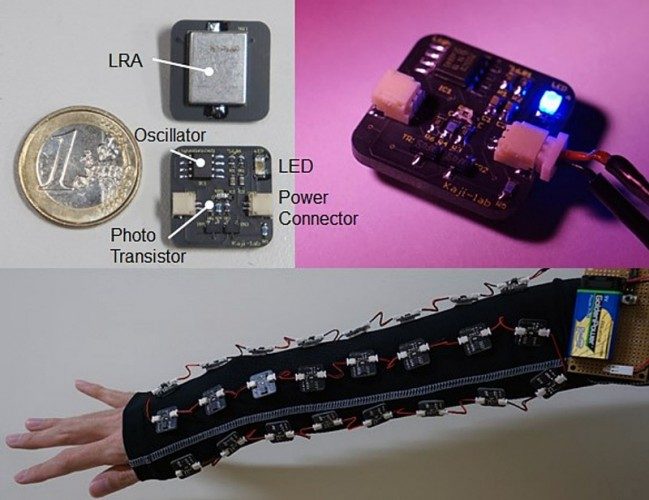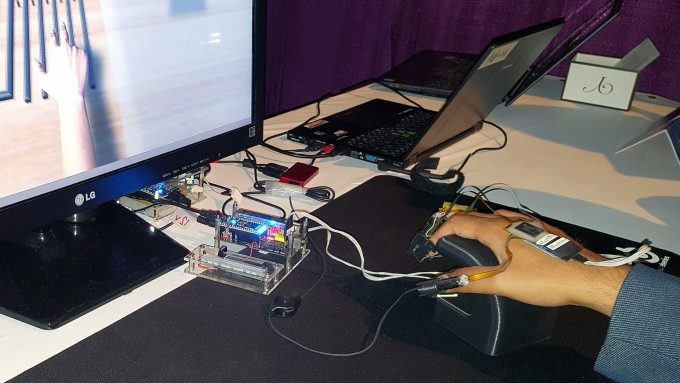HALUX
SIGGRAPH was also host to some other smaller experiments. One was an untethered system of many small vibrating units that were controlled by detecting projected light, called ‘HALUX’, by researchers from the Kajimoto Laboratory at The University of Electro-Communications. I wore an HTC Vive, along with an arm sleeve embedded with HALUX, and stood in front of a projector. Certain patterns of light would then be projected when something came into contact with my virtual arm.
Now, this demo had problems with syncing as well, but as expected, in the split seconds it worked before the illusion was broken, it really did feel like something bumped into my arm. It worked because the timing of the visuals with the haptics were right, and didn’t work because they then went out of sync… or because I was bothered that the rectangular object I saw in VR was supposed to represent my arm.
FinGAR
Researchers from the same Kajimoto Lab also presented ‘FinGAR’, which attached vibrating and also electrically stimulating units at the ends of your fingers. Except this time, there wasn’t any VR, which made it more difficult for me to see the system’s potential.
The haptic sensations were more complex than what could be provided through mechanical vibration alone; I always had a thought in the back of my mind while trying the demo, that had it been in VR, it could have achieved a whole new level of realism. So even if one kind of feedback is very accurate and complex, it may not convey a sense of believability without the other senses to provide enough context for your brain to judge that what you’re feeling is an actual object rather than mere stimulation from a wearable device.
Read the FinGar Research Paper
Suffice it to say, there were many unimpressive haptics experiments at SIGGRAPH, as synchronization, calibration, or other problems plagued them. It seems we still have a long road ahead of us to a truly convincing sense of touch within VR. There are other methods to achieve certain types of haptics, but vibration is the most popular, and some of the experiments at SIGGRAPH show that big improvements from what’s common today are quite possible.








